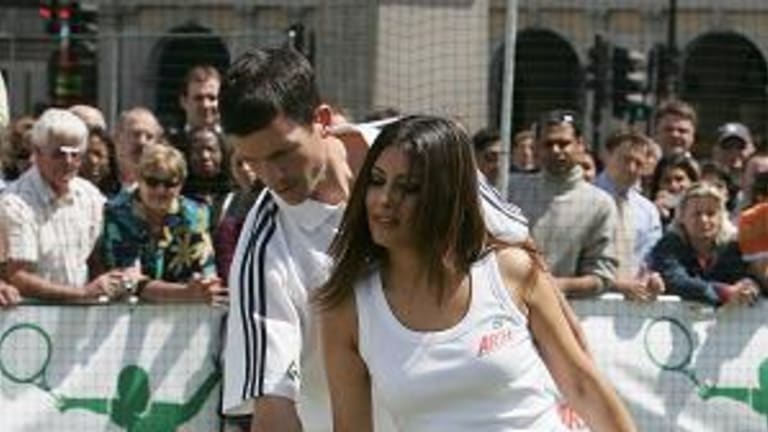By TennisWorld Contributing Editor Andrew Burton
Evening, all.
The second really big match in the ATP tournament is due up tonight, a QF between Roger Federer and Fernando Verdasco.
The first, the R16 tussle between David Nalbandian and Rafael Nadal last night, exceeded expectations. For two hours, Nalbandian took it to Nadal on the big stadium court, rolling topspin FHs wide to the deuce court and ripping his two handed BH apparently at will to either corner. Then, as I guess 99% of you already know, we came to the inevitable Moment Of Truth - MP Nalbandian at 30-40 on Nadal's serve.
Nadal hit a slice serve wide, Nalbandian played a BH to the deuce side, and Nadal came across and hit a FH winner behind Nalbandian who was attempting to recover to the center of the court. Two points later, a second MP: Nadal blistered a 130 mph serve at the body, and Nalbandian couldn't keep the return in play. A third MP, and this time it was a Nadal FH winner that kissed the deuce sideline. Nadal would save one more MP in that game, and then a MP on Nalbandian's next service game before breaking Nalbandian's serve and his heart. The two men went to a TB, won 7-5 by Nadal, and Nalbandian said "No Más," falling 6-0 in the third set.
The match was a microcosm of the two men's careers to date: for more than half a decade, Nalbandian has made the best players in the world look ordinary for parts of matches, matches and (occasionally) tournaments, but he can also choose to go away. Nadal last night didn't have much of the "No 1 aura," but he had something more valuable - the desire to fight right to the death, and the ability to cheat it. And he did this not by outlasting Nalbandian, but overwhelming him on those key points.
Joel Drucker and I had a pleasant early morning hit today. Joel is a lefty, and I think it's been years since I played a good left hander. Joel hit several topspin FHs to the ad corner, and I got about a 20% sense of the famous Nadal-Federer match-up: my contact point for my own BH was thrown off by the different spin of the ball off the court. It was one of those kinesthetic aha! moments - you can pontificate all you like about Federer needing to do this or that at RG against Nadal, but it's much more interesting when you get a physical sense of what's involved.
This got me to thinking about what I, or other recreational players, might learn from watching the top players. I'm going to propose one lesson from each of the ATP Big 4. For those of you (hi, DMan!) who might argue that I'm giving the WTA short shrift, please do post suggestions on what we can learn from Dinara Safina or Jelena Jankovic in the comments. Just, well, keep it constructive....
First, Rafael Nadal. Well, this one's pretty obvious - never give in.
Your opponent is playing better than you today, you're tired, you just gave away the set, you haven't been able to convert a BP all match. That was then. You can still turn the match around - change tactics, change court position, run everything down.
At Monte Carlo in 2008, Nadal was down 4-0 in the second set to Federer, and came back to win the set, and the match, 7-5.
Next up, Andy Murray, winner today over Ivan Ljubicic. The modern ATP game is a battle over the corners - how you defend your corners and attack your opponent's is a determining factor in the outcome of the match. For example, watch Djokovic slide and split wide on the ad side, saving multiple points in each set.
Murray doesn't slide/split into points, but I think he's the best of the Big 4 at getting to deep balls played into the corners, working the ball back deep with his own shot, then quickly remaking his ground back to the optimum position and split stepping. Murray must look like a wide wall to his opponents: they hit a penetrating groundstroke, but instead of getting a short ball they look up from the baseline and see Murray back in position as if nothing had happened.
So here's the lesson from watching Murray: don't waste time getting ready for the next shot.
